Unimaginable today, but especially so back then. Between 1953 and 1983, hundreds of thousands made the pilgrimage to the Nürburgring to attend the 1,000 km race, a round of the sports car world championship, despite all the capricious weather conditions in the Eifel. Tents, campfires and beer crates turned the spectacle into a break from everyday life, and the newly acquired car was driven directly to the natural spectator areas. There was plenty of atmosphere in the countryside: there were the free practice runs, up to 16 hours spread over three days, to set up the vehicles. And then there was the race on Sunday, the highlight of the Ring alongside the Formula 1 World Championship race.
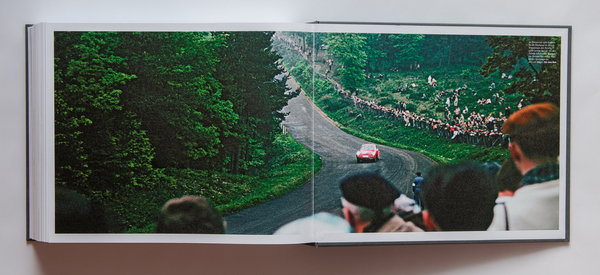
Jan Hettler and Udo Klinkel have put these 30,000 km into a 750-page book after years of research and meticulous photo selection.
30 years of the Sports Car World Championship
In 1953, the ADAC organized a race over the 1,000 km distance for the first time - with the founding of the FIA Sports Car World Championship. As part of this championship, the teams compete against each other in such well-known classics as the 24 Hours of Le Mans or the Carrera Panamericana in Mexico and the 12 Hours of Sebring. The FIA thus bundles the large number of sports car races into one system and immediately creates a counterbalance to Formula 1, as the sports car races feature many exotic cars as well as works teams from Porsche, Ferrari, Jaguar, Ford, Mercedes and many more. And while Formula 1 will develop further away from participating works teams in the coming years, the manufacturers see the World Sportscar Championship as the ideal place to achieve prestigious victories on prestigious race tracks. The Nürburgring is one of them.
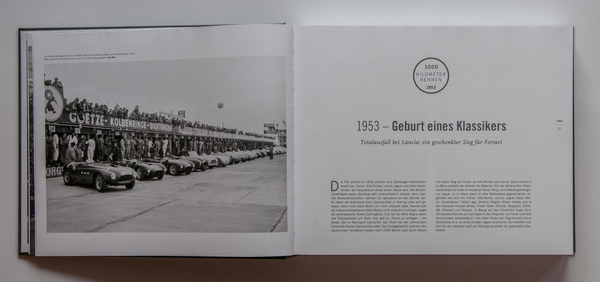
The elite at the start
The 1000 km race quickly establishes itself as a permanent fixture in the World Sportscar Championship calendar and in fans' calendars. Imagine this: 350,000 paying spectators make a pilgrimage along the narrow roads of the Eifel to the circuit to spend a weekend in the open air in the vast majority of cases. In the coming years, entire families or groups of fans will take up permanent seats along the track to watch the spectacle from there. It is not only the established manufacturers in the larger categories that will be fighting fierce battles, the smaller classes will also be battling hard and pushing the technical limits of the regulations. The heroes of their time are at the start.
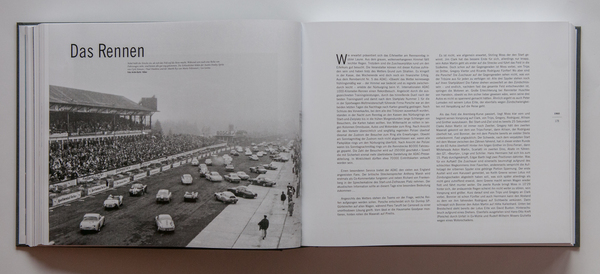
Most of the drivers are still mercenaries who are committed from race to race and mission to mission. It often happens that these drivers are involved in Formula 1 and make guest appearances in Formula 2 or the World Sportscar Championship on the free Formula 1 weekends. Or vice versa. In any case, the starting fields are always well filled in times of entry fees.
The Nürburgring as a test track
The popularity of sports cars reached its peak in the 1960s. Ferrari, Ford and Porsche spared no effort or expense to win the sports car world championship title. Just as in the European Hillclimb Championship, the aim is to leave the opposition behind by any means necessary and to gain the lead with strategy and technical finesse. The days of good drivers and high reliability are over. Disc brakes, fuel injection, aerodynamics and spoilers make sports cars more of a hotbed of innovation in the automotive industry than Formula 1. The Nürburgring becomes a popular test track, because the demanding test track demands everything from drivers and equipment. Those who pass here usually also pass elsewhere. The compression at the Fuchsröhre, the downhill curve passages as a brake test or the 3 km long Döttinger Höhe with its absolutely straight route to reach the absolute top speed are challenges that had to be faced over a good 20 km. Ford GT 40, Porsche Carrera 6 or 908, Ferrari Dino or in the smaller classes the Alfa-Rome, Triumph Spitfire as well as special constructions such as the Martini BMC ACS ensure a colorful starting field and thrilling, exciting races.

The regulations
The FIA is constantly tweaking the regulations in Paris. On the one hand, to attract a full field of spectators, and on the other, to keep the competition under control in view of the rapid leaps in technology. She does not always have a sure hand. What led to the apocalypse caused by the Porsche 917 at the end of the 1960s was quickly reversed.
But the popularity of the race and the championship declines. It must be the die-hard fans who raise the number of spectators to over 100,000 again. It is more likely to be 60,000 - 70,000, who, also slowed down by the oil crisis, are fighting against the political reality. The colorful starting fields of yesteryear are now filled by the BMW and Ford works teams in the touring car class. Matra, Mirage and Alfa Romeo compete for the victories. And as a result of the oil crisis, it will be the BMW CSL Coupés and the Capris from Ford, as well as the Porsche 911, that will be competing in the 1000 km race. Vehicles that are more or less reminiscent of sporty production cars but are far removed from the exotic elegance of the sports cars from the 50s and 60s.

The swan song
Somehow the furnace went out at the end of the 70s. Of course, the aces are still fighting for sporting laurels. But the spectators don't want to see a BMW M1 win. And the armada of Porsche 935s or BMW 320s don't look any more appealing. Even an Opel Ascona or an old BMW 2002 strays into the starting field here and there. There is now no trace of international flair among the teams. And the days when Formula 1 aces took to the wheel are also a thing of the past. For the time being, even the appearance of Group C in 1982 could not change this. At last there were real racing cars again, the flat flounders were reminiscent of the best times of the Porsche 917 & Co. but the regulations were incomprehensible to the fan. The engines were virtually optional, and a consumption index was supposed to ensure equal opportunities again. It suited the marketing at the time, but not the minds of the fans who wanted to see the fastest car win. Who else would?
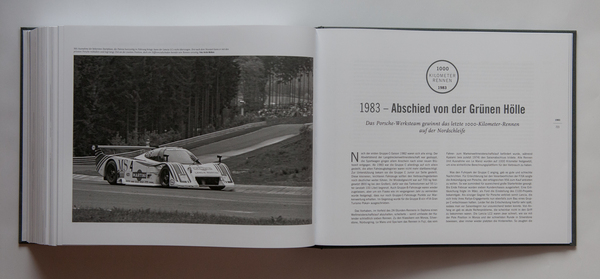
In contrast to the crutch Ford C 100, the Porsche 956 became the measure of all things. Lancia is actively involved and capable of winning. Over the course of the decade, Sauber-Mercedes Peugeot, Nissan, Toyota, Mazda and Jaguar were to join the ranks of well-known car manufacturers competing for the manufacturers' and drivers' titles in the World Sports Car Championship, which has been held since 1982. But that is another story. Because the planned reconstruction measures at the Nürburgring meant that 1983 would be the last edition of the 1000 km race on the classic Gran Prix circuit. The old Nordschleife had lost its license for Class A races. From 1984, the 1000 km race was held on the new, only 4.5 km long, circuit around the start and finish. This meant that the 1000 km race had finally lost its unique character. So in 1983, after 30 years, an era came to an end with the dropping of the black-and-white checkered flag in a light drizzle on the old Grand Prix circuit in the Eifel.
A book like no other
The reviewer himself was present at countless discussions, which sensibly took place during the ELMS races or the WEC at the Nürburgring, about the birth pangs of this book. Countless questions were discussed: How thick can a book like this be, where do you get the race logs, what other picture archives are there and who do we interview exclusively for each race year? Well, Jan Hettler and Udo Klinkel have found an answer. It has 750 pages and reviews each racing year chronologically.
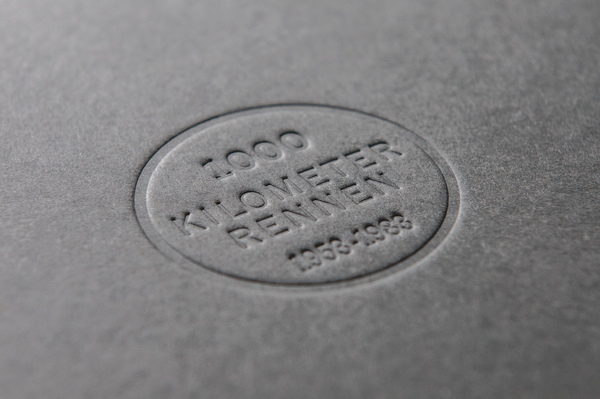
Divided into a brief overview of the season, it takes a detailed look at the starting field, then discusses the course of training and documents the race. The final section contains detailed statistics, including spectator numbers, class divisions and weather conditions, as well as details of the results. The highlight, however, is the interviews with the participants about the individual seasons. Whether Paul Frére Dan Gurney, Herbert Linke or Jack McAffee. More than 40 drivers describe their race in their own impressive and passionate words and, beyond the chroniclers, provide a glimpse into the time when drivers, equipment and spectators formed a single unit for a few days at the Nürburgring. Again and again, a lot of information about teams, regulations, driver line-ups, characters and anecdotes are included. They complement the overview of the entire season chronicle and expand the insight into the significance of the respective race; it is a pleasure to be documented in such detail.
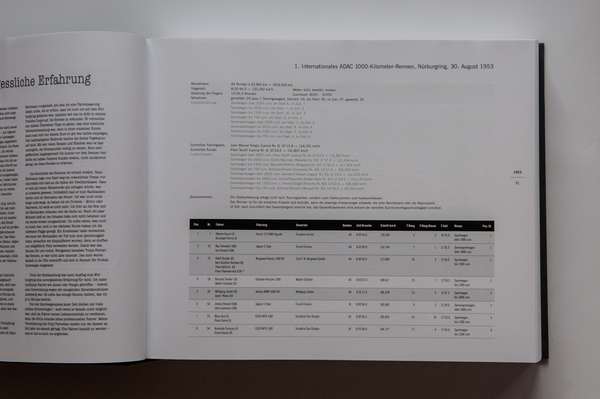
Limited
This book, limited to 1000 copies, captures three decades of motorsport. Brilliantly formulated in terms of language and documentation. The fact that the authors have been given previously unknown photographic material for publication will also please those who don't just want to read. However, they should not miss out on reading the detailed and equally crisp captions. From the first to the last page, this is a meticulously crafted book with absolutely appealing workmanship and is therefore highly recommended, and its weight alone makes it clear how much it contains.

Bibliographical information
- Title: 1000 Kilometer Race 1953 - 1983 - The ADAC Sports Car World Championship Races on the Nürburgring-Nordschleife
- Authors: Jan Hettler/Udo Klinkel
- Publisher: Delius Klasing, 1st edition 2015
- Format/size: 310 x 260 mm, hardcover in slipcase, 744 pages, 238 color and 284 b/w images as well as tables and interviews
- Price: EUR 198.90
- ISBN: 978-3-667-10310-9
- Order/buy: Online at delius-klasing.de, at amazon.de or in relevant bookstores








































